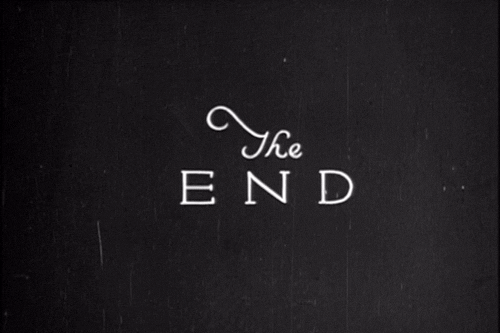
Good grief! Not another year, another catalog of cool shit. Isn’t practically your whole life -- or the important, internet parts of your life at any rate -- an interminable sequence of people imploring you to look at this, look at that, be impressed by me and my taste!? Do we need quite so many tips and MUST READs (must I, really...really?), so much advice, so much performance of discernment and intelligence and habitus?
As in previous go-rounds, I have not done a very good job with keeping up with the newest of everything. I might like your favorite movies and TV shows of the year when I see them in 2012 or 2025 or 2041, God willing. I seem especially bad at even knowing what new music is around, and when I look at the year-end top 10s and top 100s, I feel gratified to recognize a few titles here and there. Although I spent half the year doing research on old video games, I have hardly played any new ones. I’m best at watching TV these days, but even then we have little more than an hour each evening between the kids’ bedtimes and our own. I guess I could try to squeeze another show in here and there while working out at the gym or at my desk eating lunch. But the pdfs and blog posts and newspaper or magazine stories on my screen need me then.
So here goes: my favorite things of 2011, the last year of the 12-inch extended dance mix version of my youth. I turn 40 in a few moments (ok in February) and am anticipating the narcissistic burdens of feeling middle-aged to drop on me like a lead blanket, so until then I am going to keep on feeling young. Young-ish.
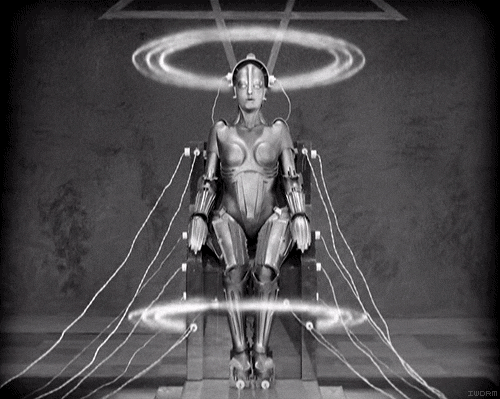
The Silver Screen: Still Bigger and Louder than Most Television Sets, Still Can’t Fast-Forward the Boring Parts
Many of the handful of 2011 releases I saw at the cinema were kidpix I would not likely have seen but for my dadhood. The less said of The Smurfs the better, but The Muppets was a brilliant and clever romp, and I would gladly watch it a second and third time in the theater. “Travel by map” has become a familiar phrase for me and my 7 year-old, and we have taught the toddler (too young for trips to the cinema) to laugh at “Mahna Mahna.”
It’s gotten to the point that I don’t even read that much about movies and assume the word-of-mouth filter will help me figure out what I really need to see. Opportunities are fairly rare for Elana and me to see movies together, and I seldom go alone these days. Early this year we saw many of the Oscar-buzz films of 2010, including Winter’s Bone, True Grit, The King’s Speech, and The Black Swan. True Grit was my favorite film that I saw in 2011, but it belongs to last year. Seems odd to be comparing it to The Muppets, not just because of genre and audience. They don’t seem to belong to the same time, despite having been released within twelve months of each other.
Of the not-for-kids genres, I most highly recommend Tree of Life and The Descendants, both of which are about painful family ties. Tree of Life has some parts I would gladly have fast-forwarded past while watching on DVD, but the naturalistic scenes with the kids growing up and the hard father played by Brad Pitt, are gorgeous and evocative. The photography conveys an uncommon spiritual power, and the film, as someone on tumblr said, is as powerful as still images or as animated GIFs as it is unfolding in cinematic time.
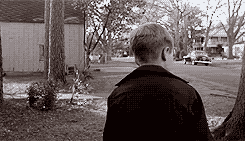
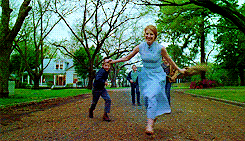
The Descendants is just sad through and through, and funny in many places. I don’t know why, after years of thinking about it, I still don’t understand the pleasure I take in feeling sad at the movies. I’ve considered the usual explanations (catharsis, etc.) and they don’t satisfy me. I could say more in detail but I’m against spoilers, and one of my greatest pleasures in seeing this film was that everything about it was a surprise. All I knew was Alexander Payne and George Clooney. I didn’t even know to expect it to be set in Hawaii.
I’ll give an honorable mention to Bridesmaids for shooting a few exteriors in familiar spots in Milwaukee and offering a kind of feminist comedy for a broad audience. I like Rose Byrne as a comic actress though it’s hard for me to shake my associations with her dour character in Damages, and the Melissa McCarthy bits are a tad more outlandish than is my taste. However, I laughed quite a lot pretty much from the beginning to the end.
Word and Image
In describing favorite things I have read, I'm going to say as much about technology and interface as about content. This year, the way I have read has often seemed just as important as the words and pictures.
Although my scholarly work addresses media of the moving image, I still get much of my pleasure from media of the printed word, even as they are increasingly delivered through the same channels (screen devices) as the moving images of games, shows, and films. Increasingly I become frustrated by the constraints of the various formats of print, and not just of hard copies. One of the things I most want from reading materials is their ability to lay flat on a surface, like the reading ledge of an elliptical trainer or a table where I’m eating a meal. I also like them to be easy to read while laying on my back in bed or while standing around in the kitchen waiting for a slow stream of water to dispense from our fridge. For these uses, the tablet or iPod touch may be an ideal device. I also want numbered pages for teaching, which makes the Kindle device (for me an iPad) a bad option in some instances. But another thing I want is easy annotation, and PDFs beat Kindle books because they can be transferred easily from device to device. Even PDF annotation isn’t as good as writing in the margins of the page, though. I also want access to any digital form of media anywhere or anytime, but some reading requires internet connection, which I don’t always have. And electronic devices have batteries that run out, among other issues. As an author of books and other old-fashioned kinds of publications myself I would like to make my words available on whichever platforms, through whichever interfaces, the reader most desires. But constraints abound.
Three of my favorite ways to read, depending on the nature of contraints in any given situation, are the Kindle app, the GoodReader app, and Instapaper. Each of these is for a specific kind of publication. The Kindle app is for books or portions of books (more on this momentarily). The GoodReader app is for PDFs, which may be documents I have written myself and am revising, or magazine or journal articles, or book chapters, or books I downloaded from the web, perhaps legally. Instapaper is for anything published on the web, from news stories to blog posts. Using the website ifttt I automate certain tasks so that my Instapaper fills up with reading material over the course of the day, giving me material to read in the evening and the following morning, or when I have time to kill and my iPod handy, like when I’m sitting in the play area at the mall or waiting for the dentist. For instance, if I star a Google Reader item or favorite a tweet, it sends the content (including the material in the page linked from the tweet) to Instapaper, which I read later on my iPod or iPad.
Despite a widespread consternation I sometimes share with many others over the fate of book retailing, which makes it seem like it’s an important civic duty to patronize bookstores (though not Amazon), I still generally avoid paying for my reading materials. I won’t buy a book I can easily get out of the library, and I won’t buy a newspaper I can get for free online. I hate the pricing of Kindle books, which I think should come free when you buy a paper-and-paste book and should certainly be cheaper than paperbacks. I do buy them sometimes for convenience. But more often I read the free sample chapters.
During the summer, which is my genre-fiction season, I solicited recommendations for mystery novels and my Facebook friends came through with more than a dozen titles of books I wanted to read. The one I actually picked up was a Reacher novel by Lee Child (don’t remember the title but it was great), which my mother-in-law passed on to me when she was done with it. I read a large handful of the first chapters of the other books I was told to try, and I always started reading a new one waiting in my app rather than heading over to the Amazon.com to buy the rest of the one I had started. The free samples aren’t the same kind of immersive, suspenseful engagement as reading a whole book, but it gives you more of a smorgasbord kind of experience of tasting lots of different things, and I quite liked it. I probably read one kindle book for every ten I sample, though I sometimes get a book I have sampled this way out of the library if I decide I want to keep going. I wonder how much I’d change these habits if Kindle titles were cheaper. I doubt very much. I recommend the first chapters of Tana French’s In the Woods, Jo Nesbo’s The Red Breast, and Walter Mosley's White Butterfly (which I did read till the end, but the library's copy).
I also recommend all of Nicholson Baker’s House of Holes and Meg Wolitzer’s The Uncoupling, both 2011 titles. I have never disliked any writing by Baker, though, including his non-fiction, so take that into consideration. My favorite contemporary novel that I read this year was Jeffrey Eugenides's The Marriage Plot, though not for the skewering of the culture of theory I was hoping to relish (it's much more minor a part than I anticipated) nearly as much as the bravura shifts in point of view, the depths of characterization, and the telling of a good love triangle story.
Sometimes I tinker with a ranking of all of the social networks that I have used. It’s not that interesting, and I generally abandon such foolish diversions quickly. But no matter where flickr, tumblr, or Linked In might rank, Facebook is always last and Twitter is always first.
twitter > something > something > something > facebook
Twitter’s structure allows for other websites to use its content in interesting ways and one site that does so is stellar, a network aggregating favorited tweets (also flickr photos) in a kind of crowd-curated best of twitter. (These are my faves.) As far as I know the user base thus far is limited (I asked to join and was quickly let in a few months ago). It’s a nice supplement to twitter in which you can see what other users are collecting and what they are indicating as worthy of other people’s attention.
The year in hastags could be its own long essay. My favorite of the year has been #humblebrag, a form of discourse you have found annoying all along but never really recognized as its own thing until this name for it came along to put everything instantly into focus. I would give it the word of the year award if I were magically tasked with the important job of choosing it.

For me, tumblr is mainly for images. I skim or skip more than a couple of lines of text in my dashboard. Like twitter, I find tumblr works best when you follow a critical mass of others so that every time you check in, the flow is totally new. My favorite thing with tumblr is to flip fairly quickly through a whole day of posts in the TumbLiking app a few minutes before falling asleep. I don’t often remember my dreams but I would like to think the surrealistic juxtapositions of imagery I find in these (and many other) tumblrs is helping me keep the demons away from my slumbering subconscious mind. Here are some of the ones I like these days:
unhappy hipsters
photojojo
ummhello
murketing
i love old magazines
this isn't happiness
nick drake
life magazine
bookshelf porn
hipster animals
dear photograph
nails and burgers
rides a bike
fuck yeah 1980s
slaughterhouse 90210
old video game ads
As for the blogs, I will refrain this year from listing every one written by a person I have met in real life. At this point I’m not noticing many new blogs coming along each year, which makes sense but is still a little sad considering how many awesome people could be blogging. Here are a handful of new-ish ones that I always look at as soon as a new post appears, even if I have more important things to do:
The Late Age of Print, by Ted Striphas, about the fate of books in these digital days, among other things.
Casual Scholarship, about video games, by Carly Kocurek.
My grad school buddy Ethan de Seife’s blog on a sparkling miscellany of topics, including cartoons, Ice Cube, soda commercials, and rock lyrics.
Feminist Mom in a Postfeminist World, a personal blog by a film scholar, Pam Wojcik.
Miriam Posner’s blog, often concerned with tools of digital scholarship.
The History of Television’s Futures by Max Dawson, not updated lately though :(
Of the venerable older sites, I am generally moved to audible laughter by Ludic Despair. I never hesitate to recommend The Awl to anyone who doesn’t know about it. Media scholars cannot ignore News for TV Majors and the fortnightly link roundups at Antenna by Chris Becker. Allison McCracken’s essays on Glee (1, 2, 3) were my favorite posts on Antenna not written by Chris. xkcd is still my choice of web comics, but honorable mention goes to The Oatmeal, for “if you do this in an email i hate you.” l I used to like Gawker, then I hated it, now I like it again. I still read Metafilter but not religiously. My abiding "guilty pleasure" is Dlisted.
I like the content of The Language of Food, a scholarly site with infrequent posts in great depth on topics in the history of foods and the words used to describe them. Another thing I like about this site is how it offers a model of slow blogging. Only three posts this year! I aspire to such a careful and stingy routine. I wish for less but better blogging for us all in 2012.
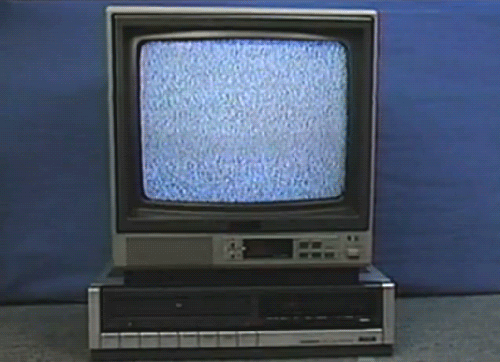
MeTube
My sense from twitter glimpses into the daily routines of others is that television is a much more frequent presence for them. If I can help it I never mix business and pleasure when it comes to TV (e.g., watching while grading or emailing), and lately I pay little attention to the stuff the kids watch now as the older one has taken a liking to violent Japanese cartoons and the little one is at the Wiggles and Teletubbies stage. I'll care more for his shows when he moves onto the Backyardigans-level fare. It’s a constant effort to watch enough TV. Recently I had the bittersweet father-son moment of breaking the hard truth to a 7 year-old that one often must choose between television and sleep, and that sleep is ultimately the smart priority. (This is what twitter people call a #firstworldproblem, but a problem is a problem!)
The show that makes me laugh the most is Curb Your Enthusiasm. The Jewish humor and the social commentary really just kill me. Larry David’s characterization as “social assassin” expresses so many of my own repressed desires. It often seems that the show was made especially for me. All those hip thirty and fortysomething women who think of Tina Fey as their imaginary best friend? That’s me and Larry David.
The show that made me cry was Friday Night Lights, the final several episodes one by one. If you haven’t made it to the end yet and have any tears to shed, prepare to be a sobbing mess.
The show that made me most eager for new episodes to air was Homeland. A couple of months ago we would prioritize The Good Wife over Homeland for fear of being spoiled by loose-lipped twitter reactions to The Good Wife, which seemed to inspire more chatter. Then the priorities flipped. A brilliant political thriller and character study. Less impressive to me as cultural commentary and meditation on the war, but still an engrossing show with actors I love.
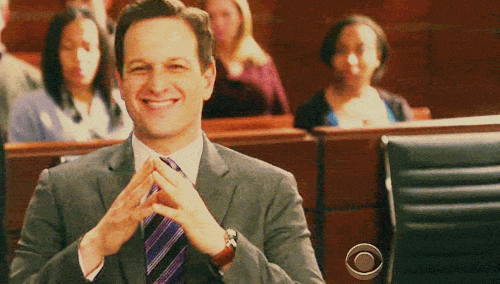
My favorite prime-time drama of the old-fashioned network variety (actually the only one I watch unless you count Prime Suspect, which seems doomed) is The Good Wife. We binged on seasons one and two over the summer, so it feels like this was a Good Wife year, and I have trouble remembering which parts were from 2011 and which parts were from earlier. Smart stuff.

I am also in awe of Louie and Parks and Recreation, for very different reasons. Louie’s seeming formlessness and crudity are bracing and inspiring. The show is clearly about something, but its absence of conventional narrative structure and its willingness to be disgusting and shamefully personal make it seem especially fresh. I’m not such a huge fan of Louie CK’s comedy, and I actually don’t like most standup at all, so I surprise myself by liking the show so much. And Parks and Rec has a warm heart and generous spirit, and a brilliantly witty style of writing outlandish but lovable characters.
Portlandia is spot-on satire of hipsterism and alternative cultural ethos. Nothing I have written about indie culture will ever be as good as Portlandia at conveying contradictions between countercultural opposition and self-congratulatory elitism.
I like moments and characters from other programs. Liz Lemon and Jack Donaghy, the occasional scenes of The Big Bang Theory, contestants making Drew Carey grin on The Price is Right, hugs and tears on practically any reality show. The Idol finale still offers plenty of showbiz, and Jennifer and especially Steven (with his Chicos-esque wardrobe and Jewish grandmother demeanor) made the judging portions of the show occasionally watchable.
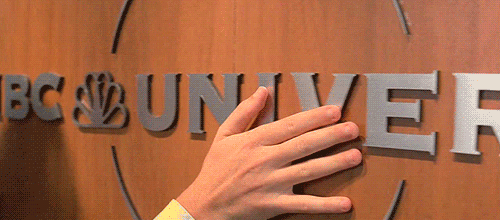
Tunes
I’m hesitant to name any music at all since I follow it so little, but I’d like to mention Lady Gaga, not just Born This Way but also her HBO and ABC specials. I like the music and listen to it a fair bit. But aside from a few sparkling pop classics like “Born this Way,” “Poker Face,” and “Bad Romance,” I find most of her songs forgettable, in the sense that I actually forget them. But I really do believe she is a force for good in the world, for preaching love and tolerance. I’m not a 100% fan of the “It Gets Better” campaign because of its failure to account for the shitty lives so many people lead as adults, and especially for its hegemonic middle-class presumptions, as if any gay person must be like the ones who grow up to work at Google or The Ellen DeGeneres Show or the State Department. I think “Born This Way” and the larger message of Lady Gaga’s appeal to her little monsters is doing similar work, and potentially more effectively.
I also listened to plenty of Adele, Fleet Foxes, and Gillian Welch. I like old music, which I think is what it’s often like to be old. When the Teenage Fanclub song came on in Young Adult, the movie basically had me in its pocket, and when the character rewound to play it a second and third time, well. I will always recognize every pop hit from around 1981 to 1988. For music from before and after that period my knowledge is spottier. I doubt this will ever change.
Favorite Thing
I cannot stop loving the animated GIF. It doesn't usually occur to me that an animated GIF is a short silent movie, though I have seen this pointed out in a number of appreciations of the form. Silence is part of its appeal, but surely what is most great about the GIF is its mixture of appreciation of a momentary, ephemeral pop culture pleasure, and the repetition of that significant moment potentially forever. Unfortunately, this neat formula misses some of what I love about many GIFs that are not captured from film or TV, that are not found footage or remix culture. GIFs are absurdly catchy, like the hook of a pop song. And they're like a spinning carousel set to the same snippet of circus music, circling back on the same spot again and again, an infinite loop of crazy fun.
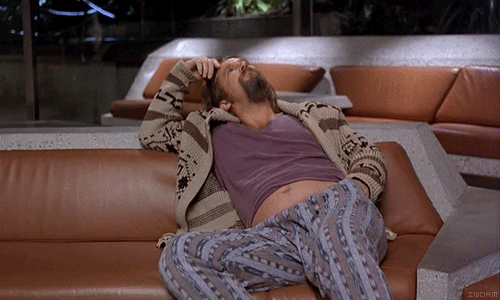

They can also be subtle or creepy, even minimalist. Some of my favorite GIFs are perfect loops of a repeated action appearing to be an endless back and forth, round and round. This is one thing a GIF can do that lends itself, for instance, to use in porn sites (totally fucking NSFW!) where the in/out of straight sex is made to appear like efficient factory mechanics. But a GIF can also seem to capture a single moment rather than a repeated action. Or it can offer a sequence of moments without a sense of repetition. There's no one best kind and the form is actually fairly versatile. I also noticed sometime in 2011 the growth of GIFs displayed in grids of multiple panels (2x3, 2x4, 3x4, 3x5, etc.) and GIFs incorporating captions and subtitles. I guess I'll expect to see new trends in GIF creativity in 2012, can't wait.
Another thing to love about the GIF is that for now at least, making and sharing them occur in an amateur province of a web culture in which increasingly the corporate voice is enmeshed with the ordinary person's. As far as I know, NBC is not yet offering its own GIFs of last night's Community for the fans to post on tumblr. Our own appropriation and sharing economy still define the GIF's life online.
Finally, the GIF is a critical tool. It's the amateur scholar's most ideal form of quotation of the moving image. The fans are showing us the way we might illustrate our more serious-minded efforts to support our words with images in scholarly discourse.

My new year's resolution last year was to make animated GIFs. I spent a bit of time trying it out, and I need to devote more effort before I know what I'm doing and can share GIFs with the world. I was glad to learn, however, that like anything worth making, it's not always easy to produce something that looks simple but actually has depth and meaning.
GIF links of note:
Uproxx lists the 20 most important GIFs of 2011.
If We Don't, Remember Me. is a tumblr of subtle, often poetic "living movie stills" GIFs. Like theses ones from Belle de Jour and Ghost World.


Similar: tiny cinema.
Anil Dash celebrates the form, including an appreciation of the Animated GIF Museum
Other Cinema celebrates the GIF as an example of nostalgic cultural revivalism, and as evidence of a move away from realism and toward artifice in contemporary online and digital culture.
Kelli Marshall appreciates the GIF in terms of its recreation of early cinema aesthetics and technologies.
Design Modo offers a page of "3D animated photo" GIFs, images staged and shot to be animated GIFs rather the the more common repurposed scenes.
Change the Thought's GIF tag is a rich source of
trippy and mind-bending and graphically experimental GIFs including the spinning circle image at the very end of this post.
My Fucking GIF Blog is self-explanatory.
The Gifzette is a snarky, critical daily news site ("All the News That's Fit to Gif") illustrated by a big animation.
A page of GIFs of Kirsten Dunst's anguished reactions sitting next to Lars von Trier at Cannes is a nice demonstration of the power of multiple frames of GIFs presented together.
And gifgifgifgifgif is the best. I took many of the images in this post from them.
If you have a cocktail handy, please drink with me to more crazy, funny, sad, stupid, smart, and favorite things in 2012.
